Samson and Delilah
Brief Synopsis
Cast & Crew
Cecil B. Demille
Hedy Lamarr
Victor Mature
George Sanders
Angela Lansbury
Henry Wilcoxon
Film Details
Technical Specs

Synopsis
By 1,000 B.C., the people of Dan have been enslaved by the Philistines for forty years. Samson, the Danite son of Manoah, falls in love with Semadar, the Philistine daughter of Tubal. Although Samson's Danite neighbor Miriam has been promised to him, Samson is determined to marry Semadar. When the Lord of the Five cities, the Saran of Gaza, takes Semadar lion-hunting, Semadar's seductive sister Delilah leads Samson to the lion before the hunters arrive, and watches as Samson kills the animal bare-handed. Delilah, who is infatuated with Samson, is impressed by his show of strength and tells the royal Saran of his feat. Doubting Delilah's word, the Saran orders his massive wrestler Garmiskar to fight with Samson, and Samson easily defeats him. When the Saran offers Samson his ring as a prize, Samson asks that his prize be the Philistine bride of his choosing, and the Saran agrees, even though mixed marriages are frowned on. Delilah is furious when Samson chooses her sister, who was already promised to Ahtur, the Philistine military leader of Dan. At his week-long wedding feast, Samson challenges Ahtur's warriors, who were invited by Delilah, with a riddle, and offers luxurious tunics as a prize. Ahtur convinces Semadar to get the answer from Samson, but when Samson discovers that she has betrayed him, he leaves the feast and steals tunics from innocent travelers. By the time Samson returns, Semadar has married Ahtur instead. Samson angrily forces his way into the wedding chamber and Ahtur's warriors start a violent attack, during which Semadar and Tubal are killed. Although Ahtur's warriors are to blame for the carnage, Delilah vows revenge against Samson as she watches her home burn. Ahtur spends the following year trying to track down Samson, who is protected by his fellow Danites until the Philistines begin to starve them. Samson is then captured after a single Danite betrays him, and Delilah, who is now living in Gaza as the Saran's courtesan, revels in the news. However, when Samson's guards stop on their journey for water, Samson prays to God to imbue him with the strength to fight his oppressors. Samson's prayers are answered, and after breaking free from his bonds, he slays his captors with the jawbone of an ass. Appalled that 1,000 warriors were felled by one man, the Saran accepts Delilah's plan to seduce Samson into revealing the secret of his strength. The princes of Gaza offer Delilah a wealth of silver for Samson's capture, and Delilah secures the Saran's promise that he will not kill Samson, but will force him to work on the grist mill. Delilah travels to Samson's hideout in the hills of Saul, and sets up a luxurious tent to lure him. Samson, who has been pillaging from wealthy travelers, plans to rob the tent until he discovers Delilah there, and he soon falls prey to her seduction. Although Samson initially resists her inquiries as to the secret of his strength, he finally succumbs to her and reveals that his strength is derived from his wealth of hair. When Miriam arrives to tell Samson that his family and friends are being slaughtered by the Philistines because of him, Samson plans to go to their aid, but is drugged by a jealous Delilah and collapses. Delilah then shears off Samson's hair, and he is taken in chains to Gaza, where he realizes that he has betrayed his God. Ahtur blinds Samson with a heated sword and chains him to the grist mill. As time passes, Delilah is haunted by her betrayal of Samson, whom she loves despite herself, and prays for help. After Samson's hair grows back, he breaks free of his chains and forgives Delilah. Delilah urges him to escape with her, as he will soon be taken to the temple as a trophy to the Philistine god Dagon, and will be chained between two columns and used for sport. However, Samson is bent on avenging his God and warns Delilah to stay away from the temple, as the power of God is with him. All the noblemen and citizens of the city gather at the temple to watch as Samson is tortured and trapped in a net. The Saran accedes to Miriam's plea to release Samson only if Delilah agrees, but Delilah, still jealous of Miriam, refuses. However, Delilah is sickened by Samson's humiliation and torture at the hands of dwarves and Garmiskar, and leaves the Saran's side to help him. Delilah pretends to whip Samson, then at his request, chains him to the massive columns which support the temple. After pledging his eternal love to Delilah, Samson prays to God for strength, and pulls down the columns. As the temple and the statue of Dagon collapse, killing thousands, Samson prays to die with his enemy. Miriam, who witnesses the disaster, tells young Saul that Samson's strength will never die, as his story will be told for a thousand years.

Director

Cecil B. Demille
Cast

Hedy Lamarr

Victor Mature

George Sanders

Angela Lansbury

Henry Wilcoxon
Olive Deering

Fay Holden
Julia Faye

Russell Tamblyn

William Farnum
Lane Chandler

Moroni Olsen
Francis J. Mcdonald
William Davis

John Miljan
Arthur Q. Bryan
Laura Elliot
Victor Varconi
John Parrish
Frank Wilcox

Russell Hicks
Boyd Davis
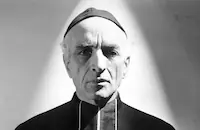
Fritz Leiber

Mike Mazurki
Davison Clark

George Reeves
Pedro De Cordoba
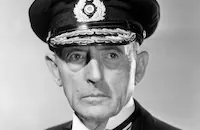
Frank Reicher
Colin Tapley

Cecil B. Demille
Charles Evans
George Zoritch
Hamil Petroff
Frank Mayo
James Craven

Nils Asther
James W. Horne
Michael Hall

Harry Cording
Lloyd Whitlock
Crauford Kent
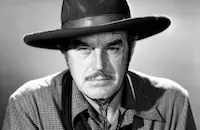
Harry Woods
Stephen Roberts
Ed Hinton
Carl Saxe
Delmar Costello
Frank Hagney
Leo Mcmahon
Thomas Browne Henry
Charles Meredith
Grace Ziebarth
Marjorie Pragon

Gene Gary

Pierre Watkin
Fred Graham
Wesley Hopper
Budd Fine
Joe Dominguez
Larry Steers
Howard Gardiner
Harry Templeton
Eric Alden
Robert St. Angelo
Gary Lee Jackson
Edward Coch
Joel Nestler
Curtis Loys Jackson Jr.
Bob Anderson
John "skins" Miller
Ruth D'albrooke
Leoncio Madero
Lester Sharpe
Edgar Dearing
Hugh Prosser
John Halloran

Ray Teal
John Merton
Ethan Laidlaw
Sally Rawlinson
Rus Conklin
Rodric Redwing
Joel Allen

Charles Judels
William Hall
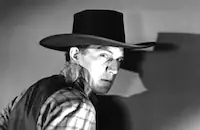
Tom Tyler
Al Ferguson
Tony Hughes
Philo Mccollough
George Eldredge
Lester Dorr
Wheaton Chambers
Larry Thompson
Jack Clifford
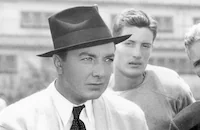
Fred Kohler Jr.
Kay Bell
Vaughn Anthony
Albert A. Cavigga
Lyle Moraine
Art Dupuis
George Magrill
Fred Zendar
Charles Wagenheim
Paul Scardon
John Northpole
Russ Clark
Ray Bennett
Gordon Richards
Ed Peil Sr.
Phyllis Kennedy
T. Arthur Hughes
Brahm Van Den Berg
Charles E. Lunard
Rosemary Dvorak
Miriam Jaye
Joyce Miller
Erica Strong
William Hall
Chuck Hamilton
Ted Mapes

Douglas Spencer
Allan Douglas
Sheldon Jett
Sam Ash
Bob Kortman
Dick Foote

Fred Kohler Jr.
Leota Lorraine
Fairy Cunningham
Crissy Ellen Pickup
Isabel Cushin
Al Ferguson
Bert Moorhouse
Keith Richards
Ynez Seabury
Carl Andre
Mort Thompson

Margaret Field
Paul Lees
Charles Dayton
Sarah Edwards
Ottola Nesmith
Jerry Austin
Fernanda Eliscu
Perry Ivins
Mike Kilian
Wanda Jay Bieber
Wilda Bieber
Charles J. Conrad
Lew Harvey
Allan Ray
Fred Datig Jr.
Robert Wood
Betty Boyd
Frances Morris
Besse Wade
Stanley Blystone
Crane Whitley
Raymond Bond
Claire Dubrey
David Bond
Gertrude Messinger
Kenneth Gibson

Greta Granstedt
Weldon Heyburn
John Kellogg
Stanley Andrews

Byron Foulger
Jeff York
Betty Farrington
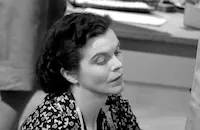
Dorothy Adams

Karen Morley
Brutus, A Lion
Crew
Lloyd Anderson
George Barnes
Anne Bauchens
Claire Behnke
Kay Bell
Guy Bennett
Richard Blaydon
M. A. Boyce
Robert Brower
Russ Brown
Roy Burns
Frank Caffey
Gladys Carley
George Clark
Harvey Clermont
Doris Clifford
Julie Cockerill
Gordon Cole
Sam Comer
John Cope
Frank Cordell
Ed Crowder
T. Howard Davis
Frances Dawson
Chico Day
Cecil B. Demille
Hans Dreier
Andy Durkus
Farciot Edouart
Joe Egli
Fredric M. Frank
Dwight Franklin
Maurice Goodman
Hubert H. Soldier Graham
Bill Greenwald
Hazel Haggerty
Earl Hardaway
Edith Head
Ed Henderson
Paul Hill
Fred Holmes
Bill Hurley
Dorothy Jeakins
Devereaux Jennings
Gordon Jennings
Gordon Jennings
Elois W. Jenssen
Ralph Jester
Richard L. Johnston
Natalie Kalmus
Wallace Kelley
Theodore Kosloff
Phil Koury
Sylvia Lamarr
Harold Lamb
Jesse L. Lasky Jr.
Paul Lerpae
Herman Lewis
Harold Lierly
Harry Lindgren
Nellie Manley
Harry Marsh
Danny Mccauley
Richard Mcwhorter
John Meehan
Tish Morgan
Eddie Morse
Ray Moyer
Lorne P. Netten
Henry Noerdlinger
Helen Gladys Percey
Gus Peters
Elaine Ramsey
Frank Richardson
G. E. Richardson
Lloyd Ritchie
Donald Robb
Barney Rogers
Jimmy Rosenberger
Arthur Rosson
Gus Ruesch
Edward Salven
Bill Shanks
Gile Steele
Frank Tait
Dick Talmadge
Dwight Thompson
Joe Thompson
Darrell Turnmire
Walter Tyler
Paul Uhl
James Vincent
Ed Wahrman
Gwen Wakeling
Buck Walters
Jack Warren
John Watson
Lenore Weaver
Dick Webb
Roger Weinberg
Wally Westmore
Pat Williams
William Woods
Dewey Wrigley
Victor Young

Photo Collections
Videos
Movie Clip





Film Details
Technical Specs

Award Wins
Best Art Direction
Best Costume Design
Best Costume Design
Award Nominations
Best Cinematography
Best Cinematography
Best Score
Best Special Effects
Articles
Samson and Delilah
DeMille had for years been attracted to the story of Samson and Delilah, but had been unable to refashion it into a plot suitable for a film. In his Autobiography, DeMille wrote, "Again and again I had gone back to the Book of Judges to read it; but every time I was stopped by the fact that I could not find the one thread that would tie together the separate incidents in Samson's life as it is recorded in the Bible. Then I came upon a little-known novel, Judge and Fool, by Vladimir Jabotinsky; and the problem was solved." Following Jabotinsky's design, DeMille combined two characters (the younger sister of Samson's first fiancée and Delilah), who appear to be separate people in the biblical text. This gives some motivation to Delilah's strange love/hate attitudes toward Samson which, in scripture, is not satisfactorily explained.
Although DeMille and his acolytes insist that his films are high-minded morality tales designed to encourage spiritual growth, most everyone else sees them for what they are: sexy spectacles designed to titillate the viewer, then absolve the conscience of guilt by ending on a note of religious piety.
DeMille deflects these accusations thusly: "I am sometimes accused of gingering up the Bible with large and lavish infusions of sex and violence," he wrote in his autobiography, "I can only wonder if my accusers have ever read certain parts of the Bible. If they have, they must have read them through that stained-glass telescope which centuries of tradition and form have put between us and the men and women of flesh and blood who lived and wrote the Bible. Clothing them in what we think is reverence, we have too often stripped the men and women of the Bible of their humanity; and I believe that that same process strips them of much of their religious value, too."
The balance of sin and salvation is nicely illustrated in an anecdote from Lamarr's lively 1967 autobiography, Ecstasy and Me: My Life as a Woman. She recalls having cocktails at Romanoff's with a sleazy talent scout (whom she pseudonymously refers to as Sidney), who tries to seduce her by offering her an audience with DeMille, who was in the process of casting Samson and Delilah. "C.B.'s a genius at those things," Sidney says, "By the time he's through spreading the money and talent around, every man in the world will want to screw the heroine of that particular biblical drama. It's a natural; a guy with muscles, a broad with virginity."
"Who plays Samson?" Lamarr asked.
"They're thinking of Victor Mature. But who cares? It's only a body to set you off in the ruins. Muscles and tits sugarcoated with religion. It's for you."
As repulsed as Lamarr was by Sidney's vulgar approach to filmmaking, she bit the carrot and met with the director. A few days later, the role was hers.
Later, Lamarr's agent echoed Sidney's sentiments, "C.B. is brilliant. When it comes to sex and spectacle, no one can tear down a temple and tear off a piece at one and the same time like he can. When he sells sex, sister, people buy because he wraps it in fancy paper with pink ribbons."
Samson and Delilah was widely praised for its Technicolor beauty and the scale of production, but few took it seriously. On December 22, 1949, The New York Times wrote, "For Mr. DeMille, that veteran geni who has already engineered three quasi-religious film pageants that tower in the annals of the screen, has here led his carpenters and actors and costumers and camera crews into the vast manufacture of a spectacle that out-Babels anything he's done. There are more flowing garments in this picture, more chariots, more temples, more peacock plumes, more animals, more pillows, more spear-carriers, more beards and more sex than ever before. At least, that's the sizable impression which Mr. DeMille has achieved by bringing together the Old Testament and Technicolor for the first time."
But critic Bosley Crowther then tagged his review with a sort of asterisk. "Does it all make for entertainment? That quite frankly depends. If you are looking for historical drama, for poetic tragedy - no. But if you'll settle for gold-plated pageants, for muscular episodes and for graphic inducements to wolf-whistling, then Samson and Delilah is for you."
DeMille may have been the master of Old Testament decadence, but in real life, he preferred a more pedestrian form of revelry. During production, DeMille invited Lamarr to accompany him to a Shriner's convention. "He wore a fez, this awesome filmmaker," Lamarr recalled. "As at most conventions, the men acted juvenile. I said to myself, 'These things I do for America.' Mr. DeMille lost some standing with me that night."
DeMille reportedly spent $100,000 in researching the historical details of Samson, Delilah and the world in which they lived. The climactic destruction of the Philistine temple posed a particular problem. It had to be grandiose enough to provide the film with a spectacular finish, but it also had to be architecturally plausible. What kind of stone temple (capable of holding hundreds of people) could be supported by two columns in close proximity? "The Bible does not give blueprints," DeMille wrote, "but we found a description of just such a building, and just such a spectacular collapse, in the writings of Pliny, the Roman historian of the first century A.D., and we constructed our temple set accordingly, with only such modifications and safeguards as the needs of our story required and modern engineering made possible."
But what makes Samson and Delilah such a pleasurable viewing experience is not its efforts at historical accuracy (one wonders where the $100,000 could have possibly gone), but the outrageous liberties DeMille took in order to sell the Old Testament story to a post-WWII audience. Nowhere in the book of Judges does it indicate that the blinded Samson was ceremonially taunted by a brigade of dwarves. The New York Times was particularly amused by one of Samson's more anachronistic lines, "I'll use you for lion bait." The production design is nearly psychedelic, with every piece of Philistine armor looking newly-minted and freshly-polished, characters bathing in what looks like a chlorinated studio pond, and Delilah's makeup radiating unnatural Technicolor hues.
Originally, DeMille considered Burt Lancaster for the role of Samson, but began looking elsewhere when he learned the actor had a bad back. The director clearly intended the actor to live up to Samson's legendary feats of strength, so he chose the brawny and handsome Mature. Unfortunately, Mature had some difficulty in living up to the role. When the actor showed up for work somewhat overweight, DeMille ordered him to undertake a vigorous exercise regimen and lose 30 pounds of fat.
According to DeMille biographer Charles Higham (a notorious scandal-monger), the director was shocked at Mature's repeated displays of cowardice: afraid of the live (reportedly toothless) lion, prop swords, water, and the wind machine. Higham writes that DeMille, exasperated with Mature's skittishness, took up his megaphone and shouted, for all the crew to hear, "I have met a few men in my time. Some have been afraid of heights, some have been afraid of water, some have been afraid of fire, some have been afraid of closed spaces. Some have even been afraid of open spaces -- or themselves. But in all my 35 years of picture-making experience, Mr. Mature, I have not until now met a man who was 100 percent yellow." It is hard to imagine a director publicly humiliating a leading actor, but DeMille was known for such displays of arrogance and cruelty.
Though she enjoys very little screen time, DeMille was particular about who should be in the role of Miriam, the virtuous woman whose love Samson ignores. In his acerbic memoir Whatever Happened to Hollywood?, co-screenwriter Jesse Lasky, Jr. (child of the founder of Paramount) recalled a discussion over the suggested casting of Olive Deering in the role:
"'I want a Jewess!' [DeMille] grumbled petulantly, 'A Jewish Jewess! If there is such a thing.'
"'She's a walking synagogue,' I assured him, 'Rebecca at the well! If you'll only just see her sir.'"
DeMille did consent to meet Deering, bringing her in and turning a bright spotlight on her face and loudly criticizing her appearance ("No camera on God's earth could photograph that face...Jesse, you have brought me the one actress in the world who cannot, I repeat cannot, be photographed from any angle!" According to Lasky, "Olive bore up wonderfully against this Gestapo-ish gesture, which had floored so many young actresses." Eventually DeMille tired of haranguing her and announced, "I think we've found our Miriam."
A rabid red-baiter, DeMille was suddenly panicked when "a mysterious phone call from Washington," informed him that Deering's name "had appeared on 'one of the lists'" (Lasky). DeMille cross-examined Lasky, and then Lasky questioned Deering, gaining the necessary assurance that she was not a Communist. Satisfied, DeMille issued his command, "Get Washington. Tell them -- if she's a DeMille actress, she's clean." In his memoirs, Lasky aptly observed, "The Boss regarded it as a matter of noblesse oblige to protect his own people from everyone. Except from himself!"
DeMille and Lamarr frequently butted heads during the making of Samson. "C.B. is an egomaniac and in a way he has a right to be," Lamarr's agent warned her just before the shoot, "I anticipate you two will be fighting every inch of the way. He knows this too. My advice to you is, don't win the battles but lose the war."
After the film's release, DeMille was interviewed about working with Lamarr, "We argued quite a bit but I respected Hedy... When I was blowing up, Hedy remained calm... Though I dread doing another picture with her because of our clash of temperaments, I have already asked her to star in The Greatest Show on Earth" (1952). Lamarr declined the offer. The role instead went to Betty Hutton who was the actress initially being considered for the role of Delilah, before Lamarr's fateful meeting with Sidney and C.B. Explaining why she refused the role, Lamarr explained, "He took too much out of me. I don't even say I was right, but as a successful actress, I was entitled to cut my own pattern and let the others cut theirs."
Samson and Delilah had a Herculean premiere at not one but two Manhattan palaces (the Rivoli and the Paramount, both located on West 43rd Street). The New York Times reported that an estimate 3,500 people swarmed the entrance to the Paramount, and another 2,000 queued up at the Rivoli. Produced at a cost of $3 million, Samson and Delilah earned an estimated $12 million at the box-office, making it Paramount's highest-grossing film to date.
Come Oscar® season, it was the film's "pink ribbons," not its edifying message that received the most attention. Samson and Delilah scored Academy Award nominations for Best Cinematography, Best Score, and Best Visual Effects, and brought home the Oscars® for Art Direction (art directors Hans Dreier and Walter Tyler, and set decorators Sam Comer and Ray Moyer) and Costume Design (Edith Head, Dorothy Jeakins, Elois Jenssen, Gile Steele and Gwen Wakeling).
Director: Cecil B. DeMille
Producer: Cecil B. DeMille
Screenplay: Fredric M. Frank and Jesse Lasky, Jr.
Cinematography: George Barnes
Production Design: Hans Dreier and Walter Tyler
Music: Victor Young
Cast: Victor Mature (Samson), Hedy Lamarr (Delilah), Angela Lansbury (Semadar), George Sanders (The Saran of Gaza), Olive Deering (Miriam), Russ Tamblyn (Saul), Henry Wilcoxon (Prince Ahtur).
C-128m.
by Bret Wood

Samson and Delilah
Quotes
The oldest trick in the world. Silk trap, baited with a woman.- Samson
You know a better bait, Samson? Men *always* respond.- Delilah
He was not captured by force of arms, but by their softness.- Saran of Gaza
Trivia
Victor Mature won the role of Samson over Burt Lancaster, who had a bad back and was considered too young. Henry Wilcoxon was considered, but thought to be too old.
Director Cecil B. DeMille considered Betty Hutton for the role of Delilah.
For the scene in which Samson kills the lion, actor Victor Mature refused to wrestle a tame movie lion. Told by director Cecil B. DeMille that the lion had no teeth, Mature replied, "I don't want to be gummed to death, either." The scene shows a stunt man wrestling the tame lion, intercut with closeups of Mature wrestling a lion skin.
Notes
Onscreen credits give the following notation: "Based upon the history of Samson and Delilah in the Holy Bible, Judges 13-16." Vladimir Jabotinsky's onscreen credit reads: "From original treatments by Harold Lamb-Vladimir Jabotinsky." It appears, however, that Jabotinsky's "treatment" was his novel, The Judge and the Fool, as translated by Cyrus Brooks. The following information was taken from the Paramount Collection at the AMPAS Library and various news items: Cecil B. DeMille first became interested in producing Samson and Delilah as early as 1935, when he commissioned writer Harold Lamb to write a screenplay based on the biblical story, from "The Book of Judges, 13-16," and bought the rights to Vladimir Jabotinsky's 1930 novel The Judge and the Fool, as translated from the German by Cyrus Brooks. Jeanie MacPherson and Sada Cowan were also hired to work on the script. At this time, DeMille also began a public campaign to find the ideal "Delilah," sending out a sketch of the sought-after look to cities around the country. In 1936, DeMille purchased the screen rights to the 1877 French opera Samson et Dalila, (music by Camille Saint-Saens, libretto by F. Lemaire). But the $5,000,000 production was shelved shortly thereafter.
In 1946, DeMille renewed his plans for a film based on Jabotinsky's novel and the wealth of research he had accumulated on the topic. In his autobiography, DeMille remarked that Paramount executives were initially reluctant to embark on yet another expensive biblical production, as they felt that post-war audiences were not interested in Bible stories. In order to convince the executives of the story's marketability, DeMille engaged artist Dan Sayre Groesbeck to make a rendering of Samson and Delilah in which Samson's brute strength, and Delilah's seductive allure were emphasized. The executives were impressed by DeMille's commitment to making the tale a love story and agreed to back the project
Pre-production for the final film officially began in the spring of 1948, when DeMille began researching the possibility of sending a second unit to the Middle East. In July 1948, after Palestine was ruled out as a location, DeMille sent a second unit, headed by directors Ralph Jester and Arthur Rosson, and including unit manager Donald A. Robb, cameramen Dewey Wrigley, Paul Hill, and grip Edgar Crowder, to North Africa to shoot background scenes and obtain authentic-looking props. Among the areas they filmed were Moulayidris and Volubilis, an ancient town in Morocco, and Bou-Saada near Algiers. According to a Hollywood Reporter news item, the unit shot in "twenty localities, from Algiers to Casablanca." Due to the extreme heat, the crew required an advance survey as to the availability of ice, which was packed around the film containers to protect the film stock.
A September 1948 Hollywood Reporter news item reported that English actress Phyllis Calvert was originally cast as "Semadar" but withdrew due to illness and was replaced by Angela Lansbury. According to modern sources, Betty Hutton was considered for the role of "Delilah." In his autobiography, DeMille noted that he based the design of the Dagon temple on historical records written by Pliny the Elder, the first century A.D. Roman scholar. Although a Hollywood Reporter news item reported that the studio anticipated spending an estimated $250,000 on the construction of the temple, New York Times reported the actual cost as approximately $30,000. Modern sources note that the temple required five months to construct. According to a New York Times article, DeMille encountered trouble with his eighty-foot-square by eighty-foot-high scale model of the Philistine temple when dynamite charges, which were detonated to produce the collapse of the temple, failed to produce the desired effect. As a result, the temple, with its forty-foot statue of the god Dagon, was rebuilt at an approximate cost of $15,000, and the scene was reshot. The New York Times estimated the film's final cost at approximately $3,200,000. According to an April 1950 Hollywood Reporter news item, DeMille donated his research documents to the Library of Congress.
While the film had its New York premiere on December 21, 1949, it was not generally released until 1950. According to a Paramount News item, the studio launched a publicity campaign with a "Mr. Samson" and "Miss Delilah" contest held at the Shrine Auditorium in Los Angeles, which included "winners of A.A.U. contests held over the nation." DeMille then granted the winners auditions. Steve Reeves, winner of the "Mr. Samson" contest, later became well-known for his portrayal of "Hercules." This film received Academy Awards for Best Art Direction/Set Decoration (color), and Costume Design (color). Samson and Delilah was also nominated for Academy Awards in the following categories: Special Effects, and Scoring of a Dramatic or Comedy Picture. Lux Radio Theatre broadcast a program based on this film on November 19, 1951, featuring Victor Mature and Hedy Lamarr, with highlights from the Saint-Saens opera. As noted in Hollywood Reporter news items, the film was re-issued in November 1959, at which time he did well at the box office. In 1984, a made-for-television version of Samson and Delilah was broadcast, directed by Lee Philips, and starring Antony Hamilton and Belinda Bauer. The television movie also featured Max von Sydow, Maria Schell, José Ferrer, and Victor Mature as Samson's father.














